

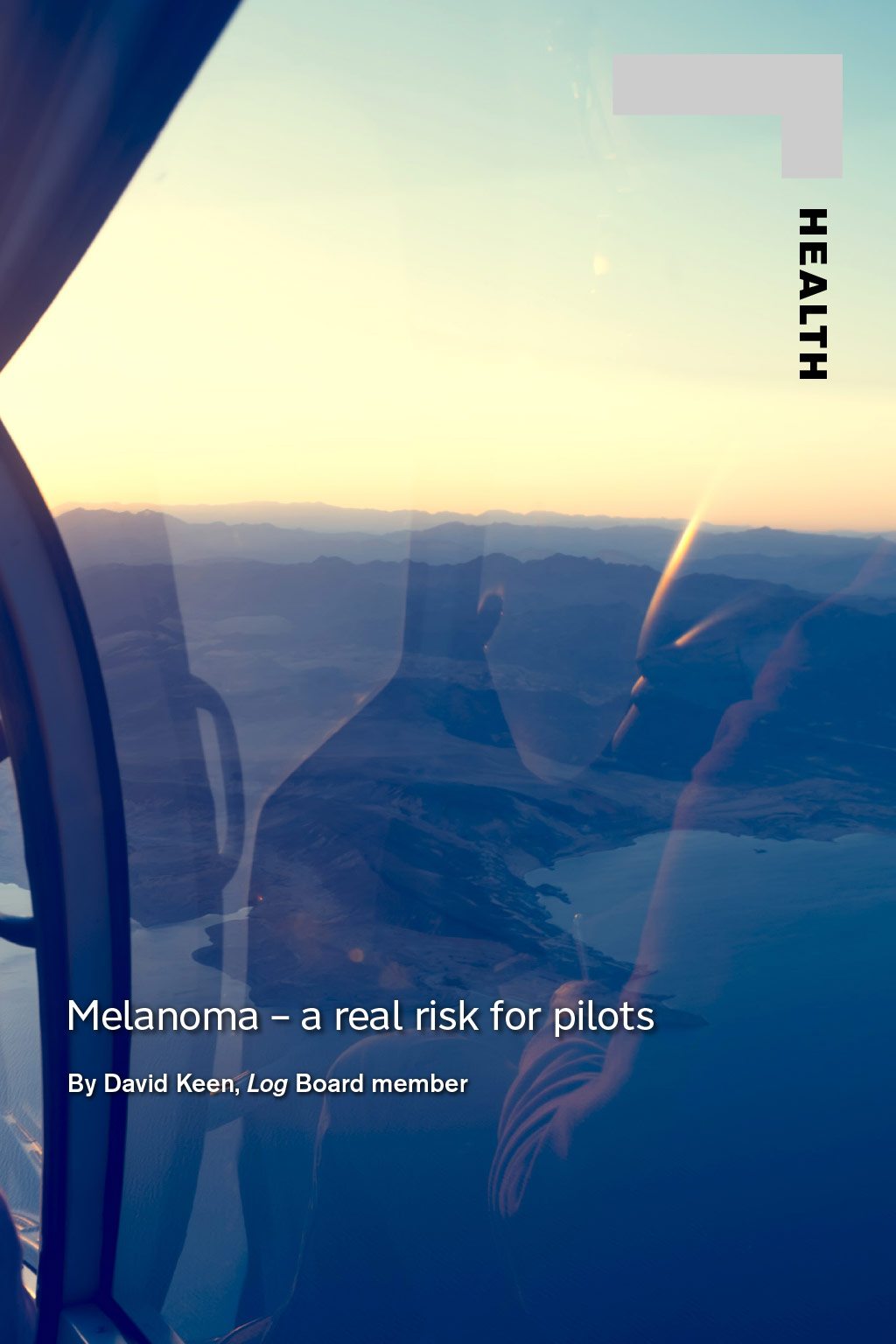
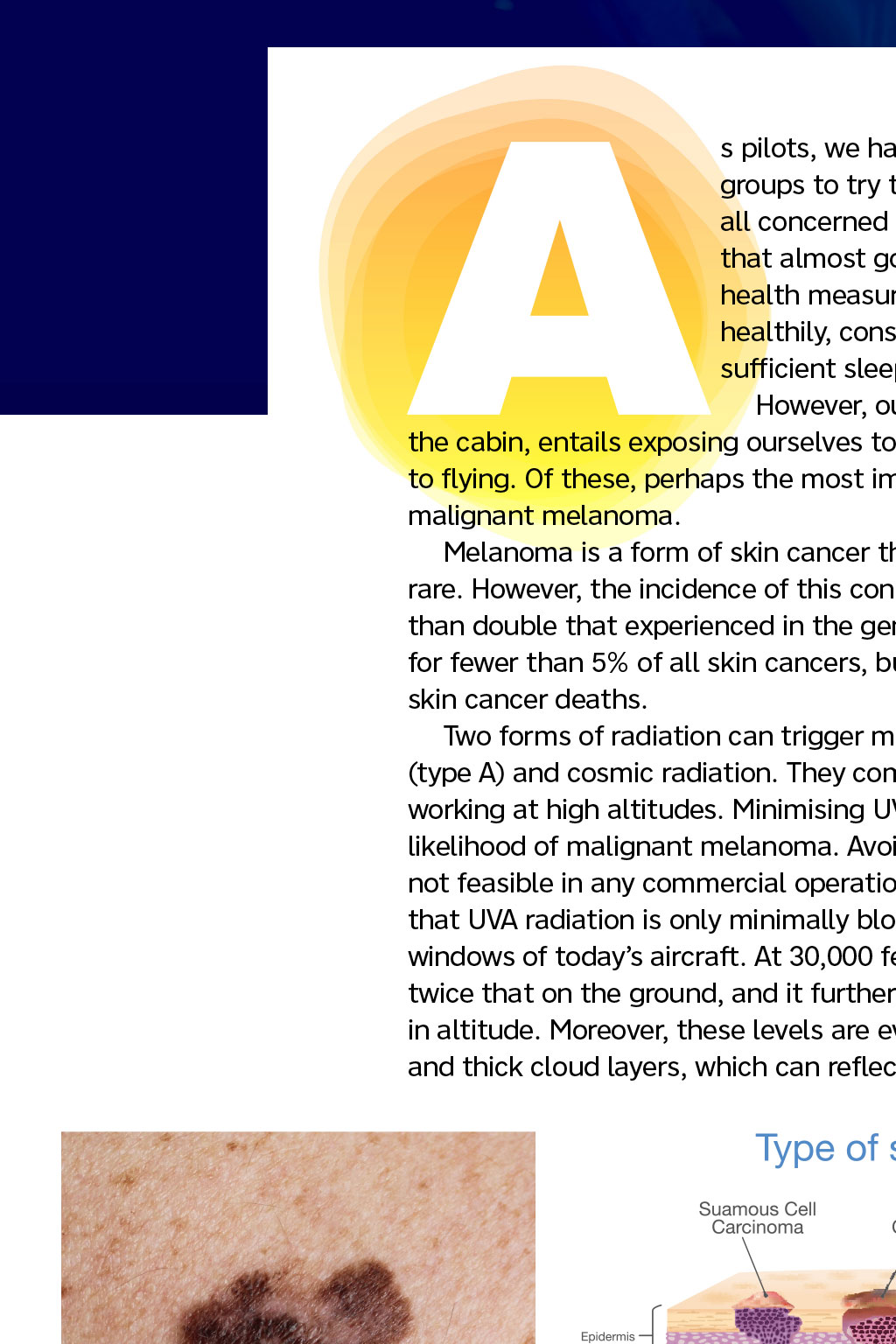
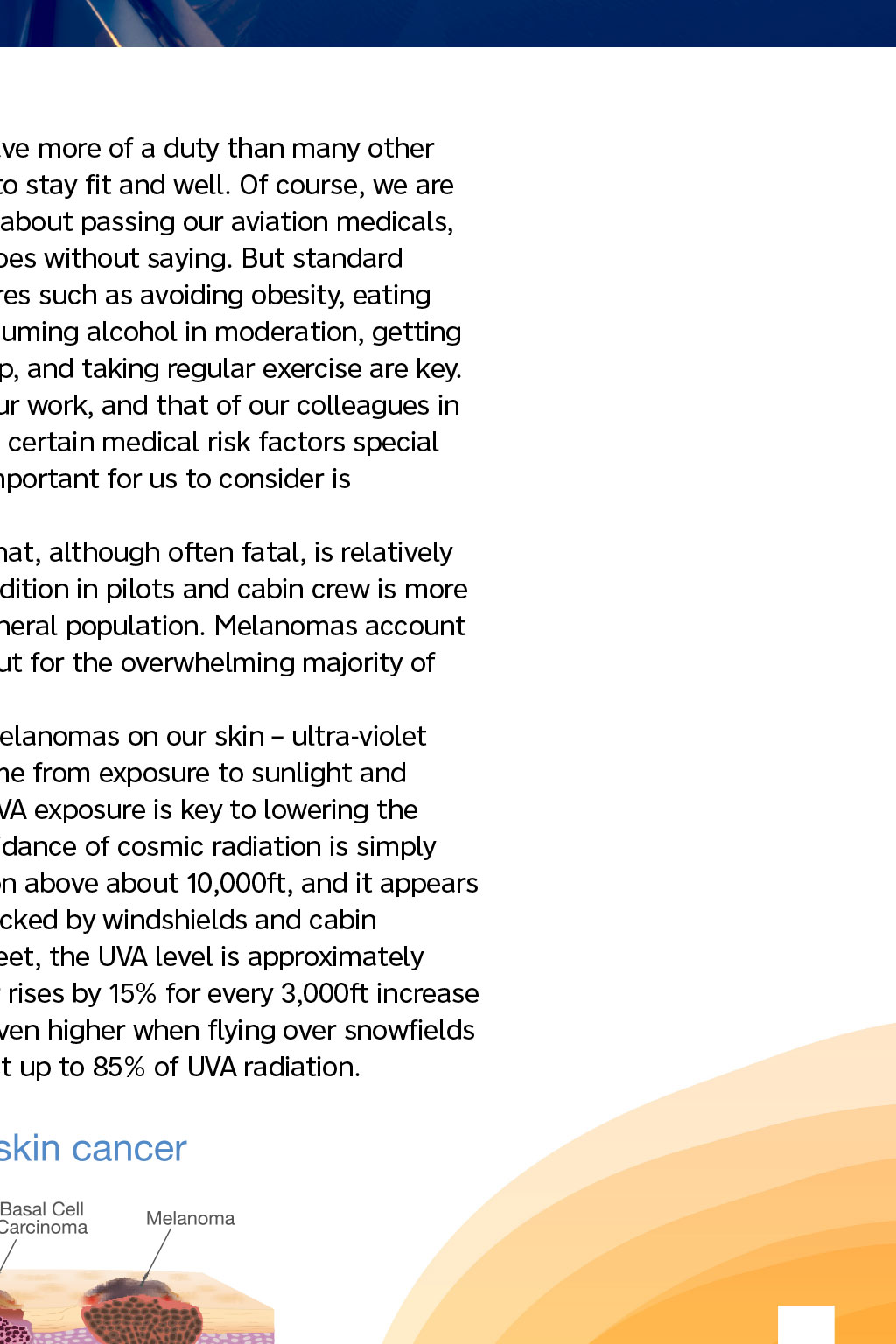
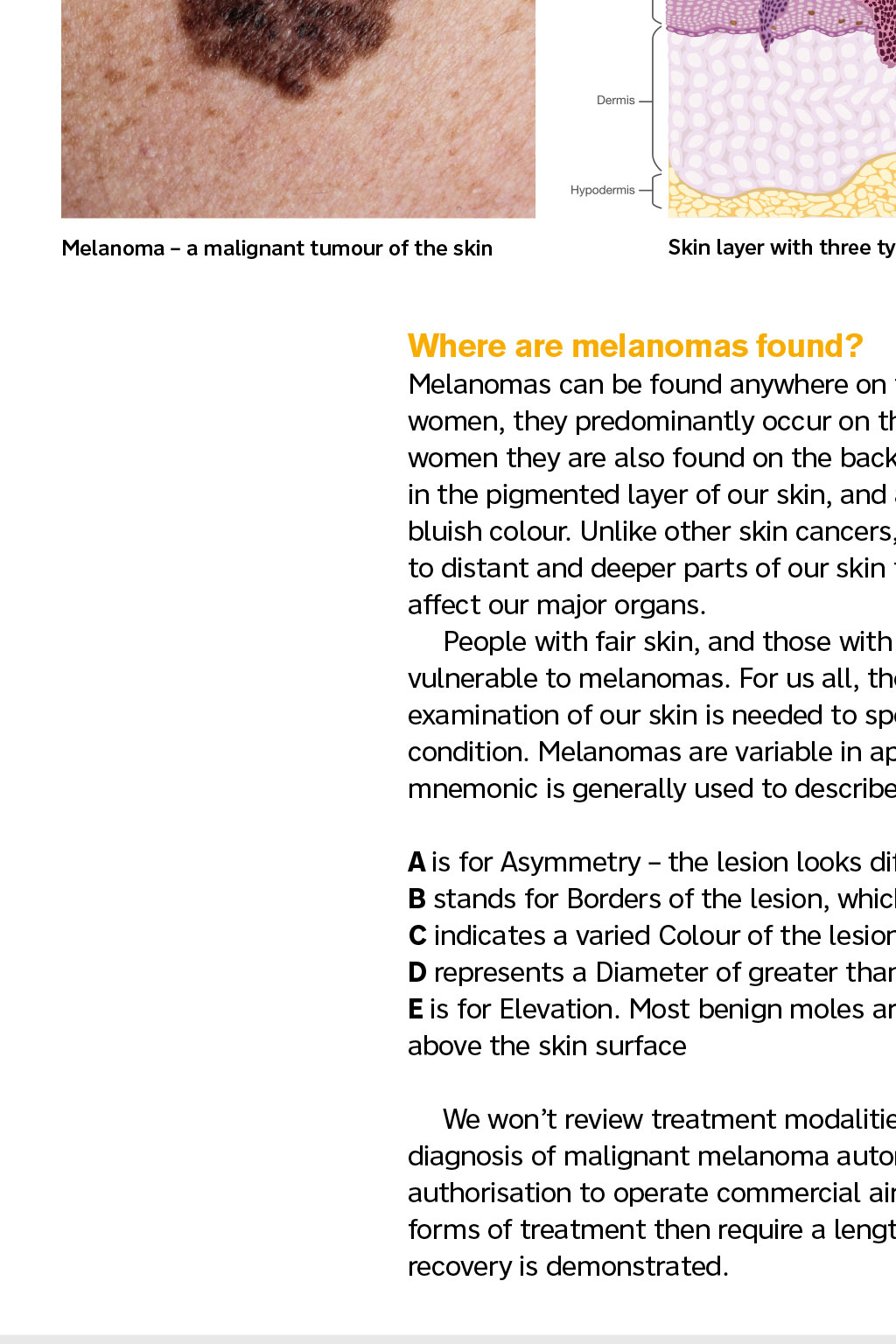
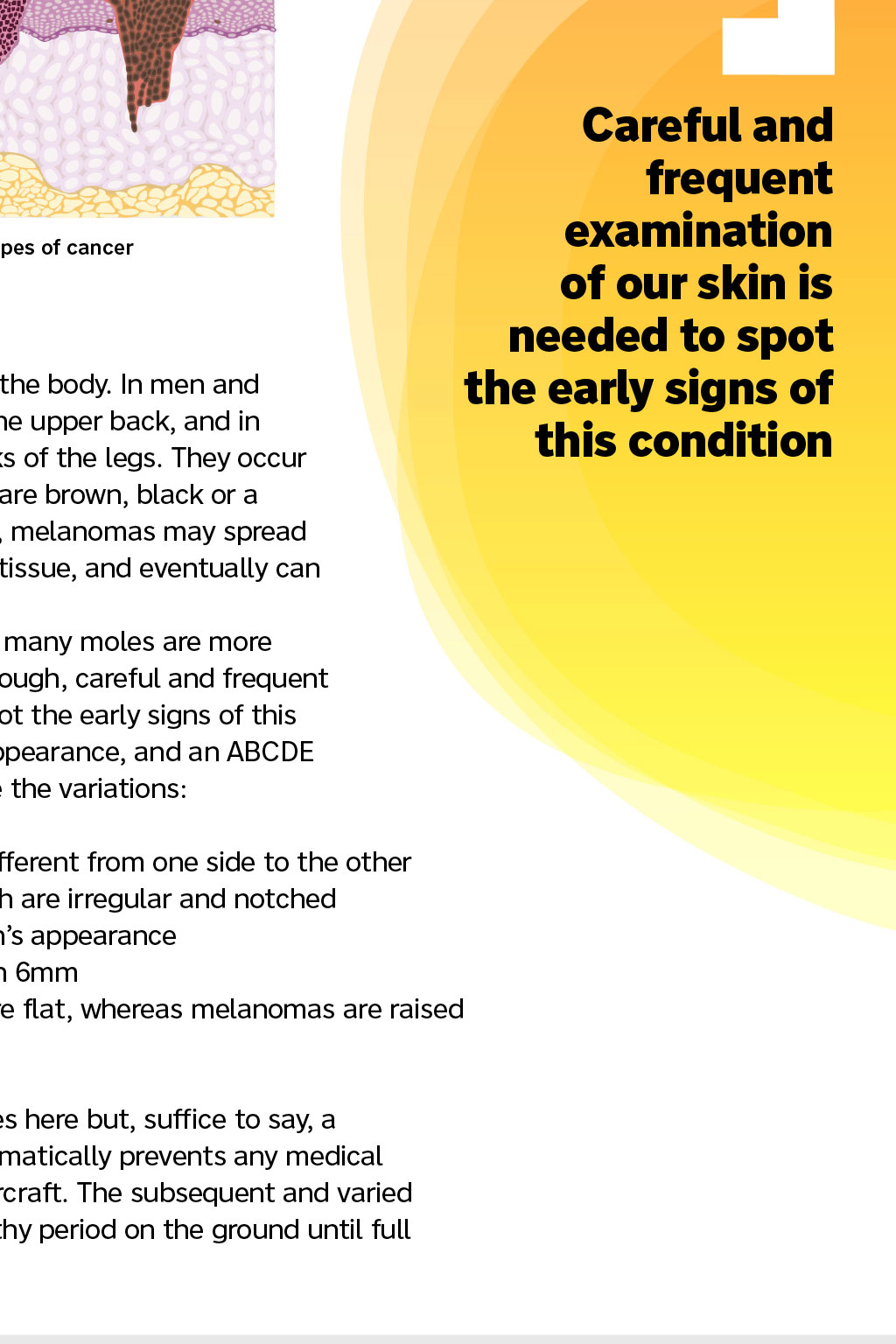
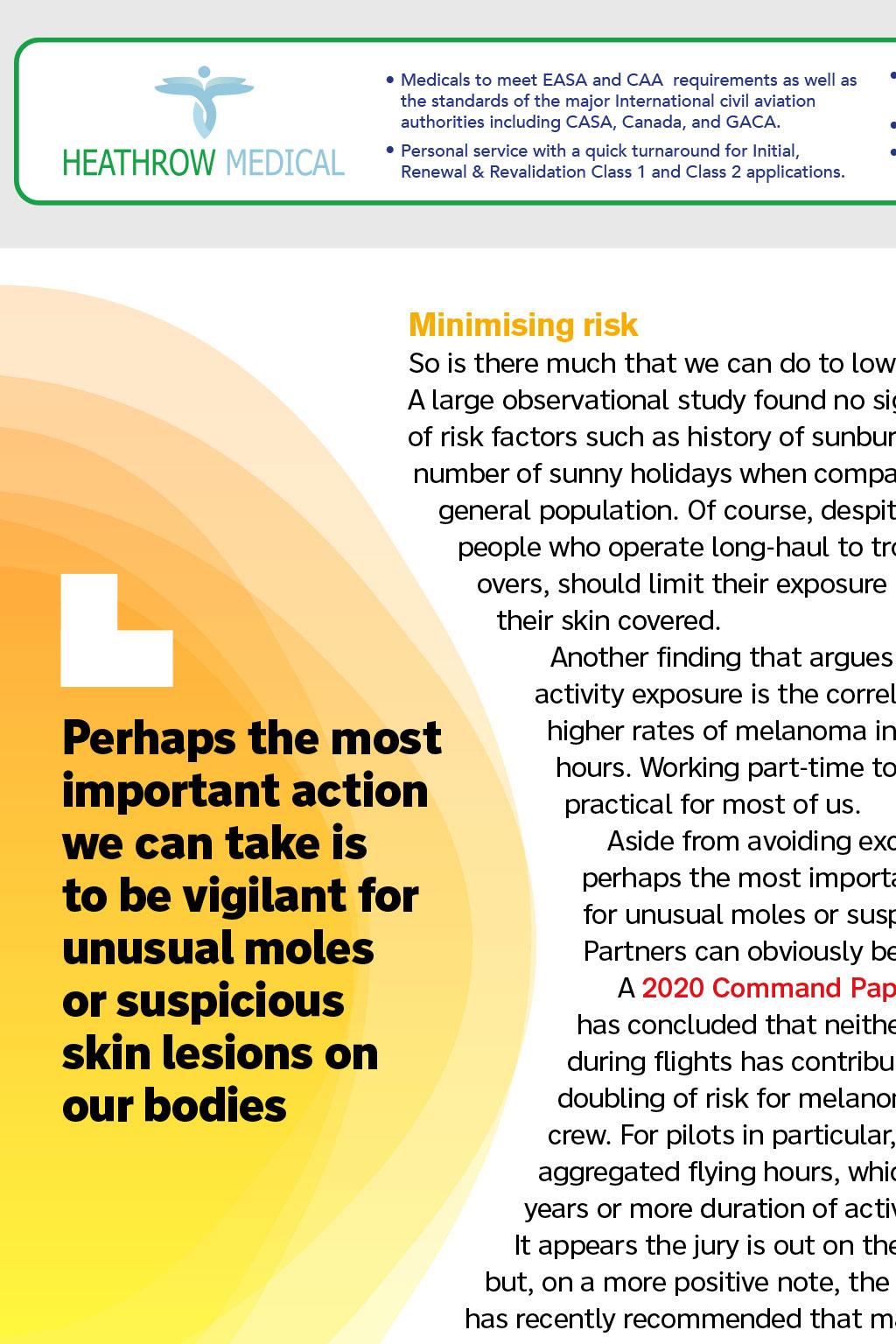
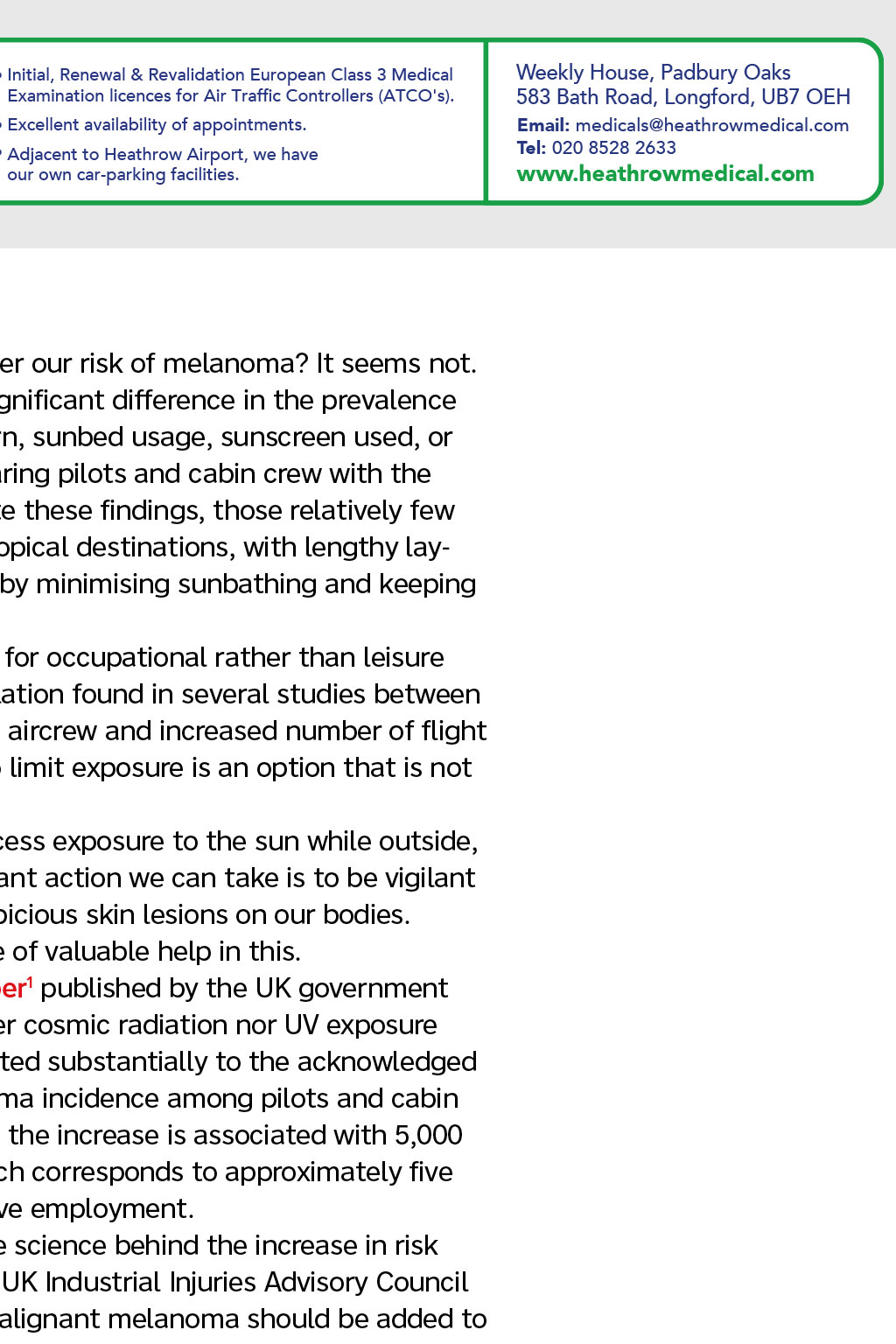
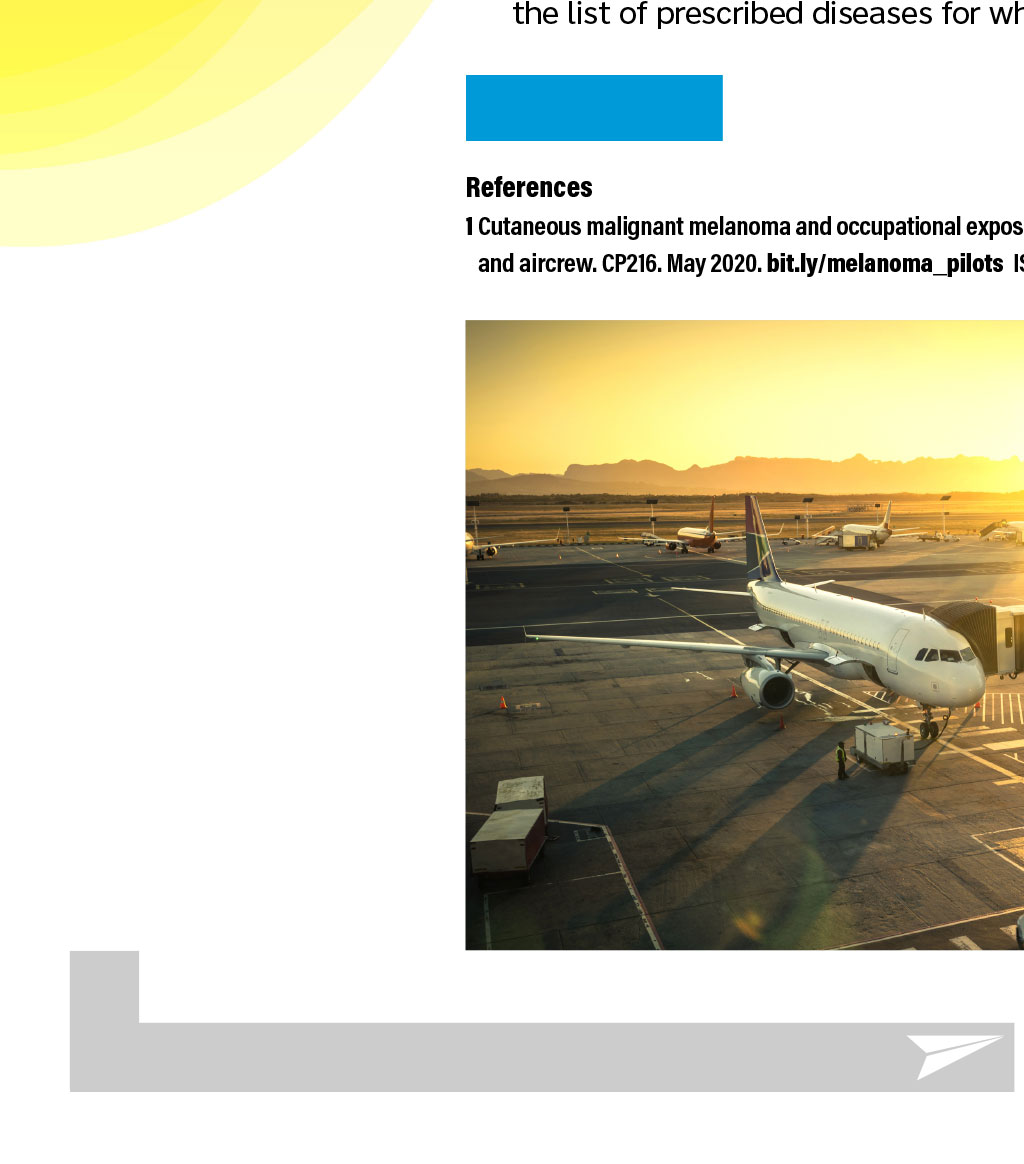
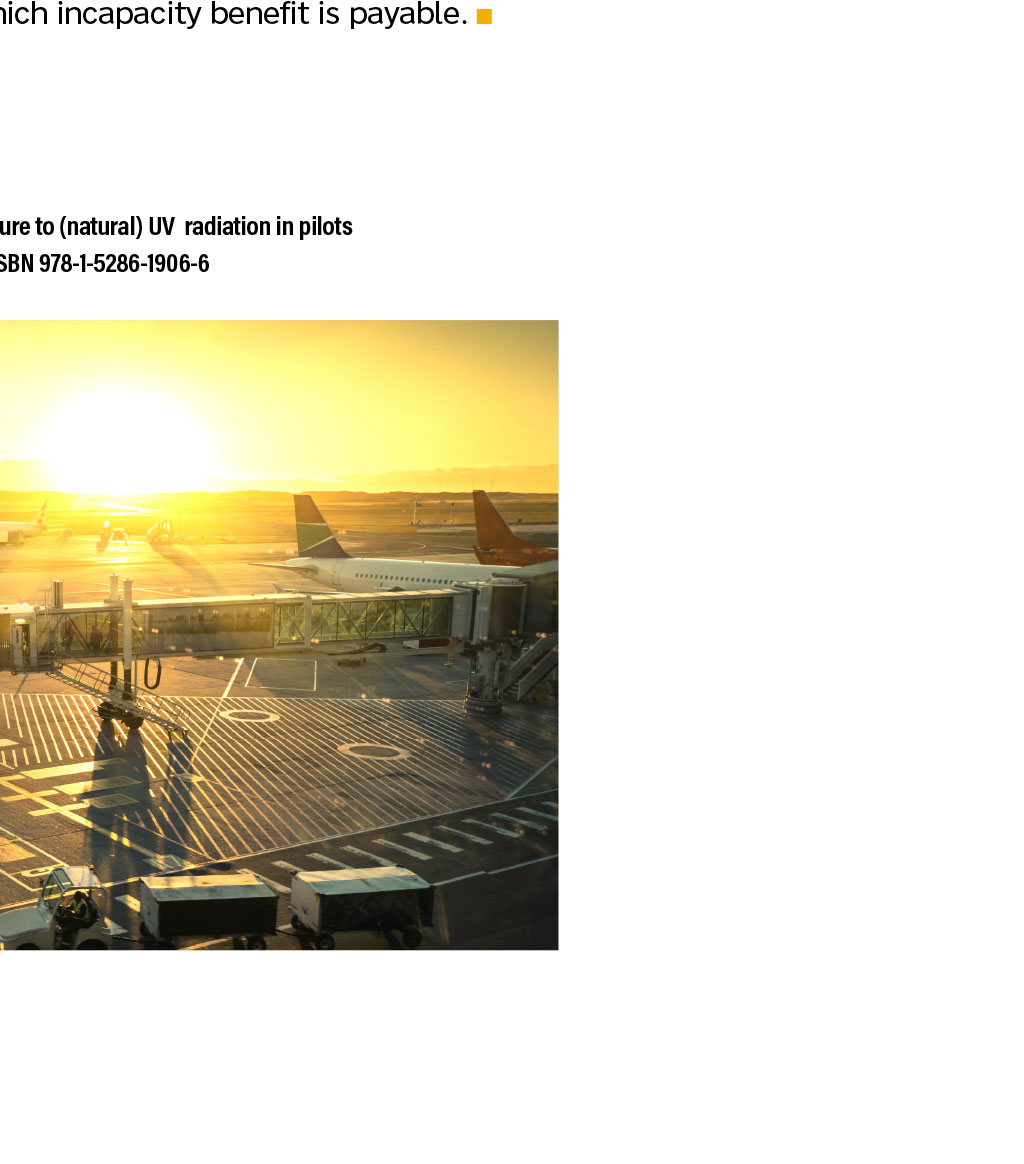












HEALTH Here comes the sun By David Keen, Log Board member s pilots, we have more of a duty than many other groups to try to stay fit and well. Of course, we are all concerned about passing our aviation medicals, that almost goes without saying. But standard health measures such as avoiding obesity, eating healthily, consuming alcohol in moderation, getting sufficient sleep, and taking regular exercise are key. However, our work, and that of our colleagues in the cabin, entails exposing ourselves to certain medical risk factors special to flying. Of these, perhaps the most important for us to consider is malignant melanoma. Melanoma is a form of skin cancer that, although often fatal, is relatively rare. However, the incidence of this condition in pilots and cabin crew is more than double that experienced in the general population. Melanomas account for fewer than 5% of all skin cancers, but for the overwhelming majority of skin cancer deaths. Two forms of radiation can trigger melanomas on our skin ultra-violet (type A) and cosmic radiation. They come from exposure to sunlight and working at high altitudes. Minimising UVA exposure is key to lowering the likelihood of malignant melanoma. Avoidance of cosmic radiation is simply not feasible in any commercial operation above about 10,000ft, and it appears that UVA radiation is only minimally blocked by windshields and cabin windows of todays aircraft. At 30,000 feet, the UVA level is approximately twice that on the ground, and it further rises by 15% for every 3,000ft increase in altitude. Moreover, these levels are even higher when flying over snowfields and thick cloud layers, which can reflect up to 85% of UVA radiation. Melanoma a malignant tumour of the skin Skin layer with three types of cancer Where are melanomas found? Melanomas can be found anywhere on the body. In men and women, they predominantly occur on the upper back, and in women they are also found on the backs of the legs. They occur in the pigmented layer of our skin, and are brown, black or a bluish colour. Unlike other skin cancers, melanomas may spread to distant and deeper parts of our skin tissue, and eventually can affect our major organs. People with fair skin, and those with many moles are more vulnerable to melanomas. For us all, though, careful and frequent examination of our skin is needed to spot the early signs of this condition. Melanomas are variable in appearance, and an ABCDE mnemonic is generally used to describe the variations: Careful and frequent examination of our skin is needed to spot the early signs of this condition A is for Asymmetry the lesion looks different from one side to the other B stands for Borders of the lesion, which are irregular and notched C indicates a varied Colour of the lesions appearance D represents a Diameter of greater than 6mm E is for Elevation. Most benign moles are flat, whereas melanomas are raised above the skin surface We wont review treatment modalities here but, suffice to say, a diagnosis of malignant melanoma automatically prevents any medical authorisation to operate commercial aircraft. The subsequent and varied forms of treatment then require a lengthy period on the ground until full recovery is demonstrated. Examination licences for Air Trafc Controllers (ATCO s). Weekly House, Padbury Oaks 583 Bath Road, Longford, UB7 OEH our own car-parking facilities. www.heathrowmedical.com Medicals to meet EASA and CAA requirements as well as Initial, Renewal & Revalidation European Class 3 Medical Personal service with a quick turnaround for Initial, Excellent availability of appointments. Adjacent to Heathrow Airport, we have the standards of the major International civil aviation authorities including CASA, Canada, and GACA. Renewal & Revalidation Class 1 and Class 2 applications. Minimising risk So is there much that we can do to lower our risk of melanoma? It seems not. A large observational study found no significant difference in the prevalence of risk factors such as history of sunburn, sunbed usage, sunscreen used, or number of sunny holidays when comparing pilots and cabin crew with the general population. Of course, despite these findings, those relatively few people who operate long-haul to tropical destinations, with lengthy layovers, should limit their exposure by minimising sunbathing and keeping their skin covered. Another finding that argues for occupational rather than leisure activity exposure is the correlation found in several studies between higher rates of melanoma in aircrew and increased number of flight hours. Working part-time to limit exposure is an option that is not practical for most of us. Aside from avoiding excess exposure to the sun while outside, perhaps the most important action we can take is to be vigilant for unusual moles or suspicious skin lesions on our bodies. Partners can obviously be of valuable help in this. A 2020 Command Paper1 published by the UK government has concluded that neither cosmic radiation nor UV exposure during flights has contributed substantially to the acknowledged doubling of risk for melanoma incidence among pilots and cabin crew. For pilots in particular, the increase is associated with 5,000 aggregated flying hours, which corresponds to approximately five years or more duration of active employment. It appears the jury is out on the science behind the increase in risk but, on a more positive note, the UK Industrial Injuries Advisory Council has recently recommended that malignant melanoma should be added to the list of prescribed diseases for which incapacity benefit is payable. Perhaps the most important action we can take is to be vigilant for unusual moles or suspicious skin lesions on our bodies References 1 Cutaneous malignant melanoma and occupational exposure to (natural) UV radiation in pilots and aircrew. CP216. May 2020. bit.ly/melanoma_pilots ISBN 978-1-5286-1906-6 Email: medicals@heathrowmedical.com Tel: 020 8528 2633